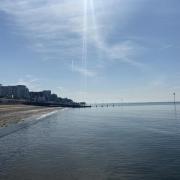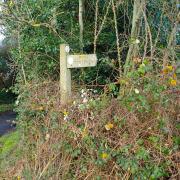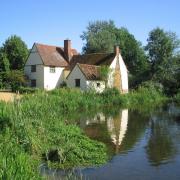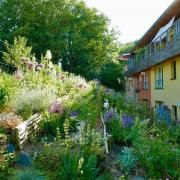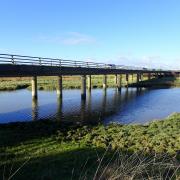While attendance in traditional Church of England churches is falling, new innovations are helping our churches to remain a key part of our communities and even keep our communities connected to the world
Churches have for many centuries been at the heart of our communities and in Essex some of our churches have been playing a key role in our everyday lives for more than a millennium. While Church of England attendances in traditional churches are falling (although they are rising in both cathedrals and in Fresh Expressions of Church) our churches are both part of our heritage and part of our landscape, and they remain a key cornerstone to community life. Unfortunately, the role of the church has downscaled, clearly corresponding with the fading of community life in many areas. In many places the village church is the only public or community place left and without a ‘heart’ in the village, rural living can become more restricted and very lonely. Recent statistics have also shown that where the average attendance in a diocese is less than 2% of the parish population, it is nearly 5% in the smallest communities, typically those in rural areas.
But there are new and innovative ways in which our churches can contribute to these communities, as one churchwarden, Richard Taylor from Wicken Bonhunt, explains: ‘St Margaret’s Church, recently renamed St Margaret’s Church and Community Centre, was the last community facility left in this village after the successive closures of the school, the pub, a shop, a bakery, a Post Office and even Wicken House. We needed somewhere to gather as a community, so with the use of grants, residents transformed the church, adding an extension with toilets and a kitchen.
The old fixed pews were replaced with moveable chairs and a new floor was laid creating a space now used for not only worship but for family parties, lace-making classes, a bridge drive, and a mother and toddler group, to name but a few activities. We now thrive as a welcoming centre of the community.’
At another church, Langford St Giles, they have taken a different approach by introducing a shop inside the church vestry. Churchwarden Irene Allen comments: ‘It has meant that our beautiful building can be open every day — previously it had to be locked because of thefts. It may only be open for two hours, but we get a lot of people stopping by and we always offer them a free cup of tea. Our shop is not vast, just a little convenience affair, but as we are not here to make a profit we can keep our prices low, and the fact that we are here just as a service to the village via the church, we feel we are doing our bit for outreach.’
However, the one thing that Langford St Giles doesn’t have, like many rural areas, is a good broadband connection, but there are plans for our churches to play a key part in this provision too.
Rural officer for the Diocese of Chelmsford, the Revd Julie Nelson, has a very practical view following increasing requests at recent funerals, weddings and other services asking whether the church has wi-fi. ‘As with anywhere attracting visitors, to give the best experience, churches need the three Ts — toilets, tea and Tarmac — but now they need to add a fourth T, technology.’
We are all aware that the problem of good reliable and accessible broadband is plaguing rural and small community areas, as the cost of laying cables underground to these areas makes the business proposition unrealistic. It is also true to say that broadband is fast becoming the ‘fourth utility’. Not only do businesses, the internet and emails rely on broadband these days, but also things like on demand TV, social media and even our children’s education are being increasingly linked to the internet as well. Many people in populated urban areas just take this for granted, but many of our rural areas are still not even getting 1Mb broadband speeds, which is just insufficient for so many of these activities.
To help get decent broadband connections across all of our rural communities, the Diocese of Chelmsford has recently invested in a local company called County Broadband. By using wireless technology connecting up a ring of churches, which are often strategically placed and feature towers or spires providing valuable ‘high points’ where the transmitter/receiver can be located, it allows the church to be a hub of the broadband connectivity. In return, County Broadband provides free basic broadband access to all within each successful community and also establishes a revenue share scheme with each local parish, where the parish can benefit from the success of County Broadband’s roll out.
Lloyd Felton, MD for County Broadband, explains: ‘Our vision is one of community inclusion. We want everyone in every community to be able to access broadband and not be forgotten about because they live in a rural community.’
By delivering broadband through the air via these aerials, County Broadband gets around the need to wait for expensive underground cabling. This means it is able to deliver fast reliable broadband into remote areas that would otherwise be forgotten and discarded as not commercially viable by the cable delivery based companies.
Churchwarden Christopher Orme, at Little Horkesley St Peter & St Paul, understands the community issues and the technology needs and this is one of the first churches to have agreed to become the community hub. ‘Historically one of the values of a rural church has been its role as “glue” in keeping the local community in touch with one another, but, in common with so many other rural parishes, Little Horkesley church is suffering from an ageing and declining congregation. As a result its role in the community is decreasing and, sadly, I do not think it is being replaced by anything else. One thing for sure is that churches are performing a very valuable service to the local community if they are suitable for hosting broadband equipment and are willing to do so.’
Irene at Langford St Giles certainly sees an opportunity to further the success of the church’s shop. ‘If we had broadband facilities here we could extend our church to include a little internet café, which would be wonderful,’ Irene adds.
We can all recognise our church buildings as one of the nation’s greatest collective assets, both as living history and now in modern times. With this latest innovation, our churches will play a pivotal role in our communities for many more generations to come. n






